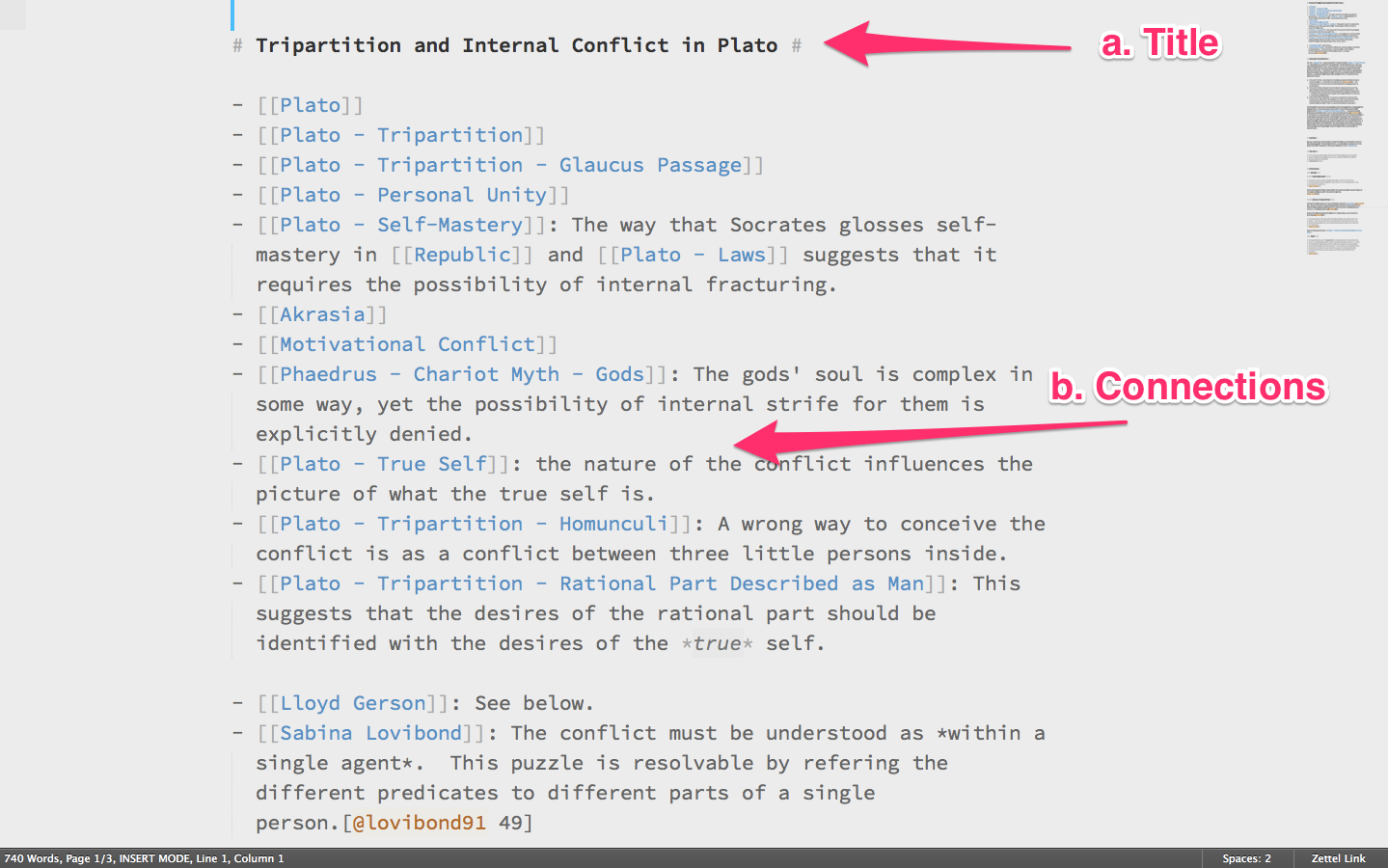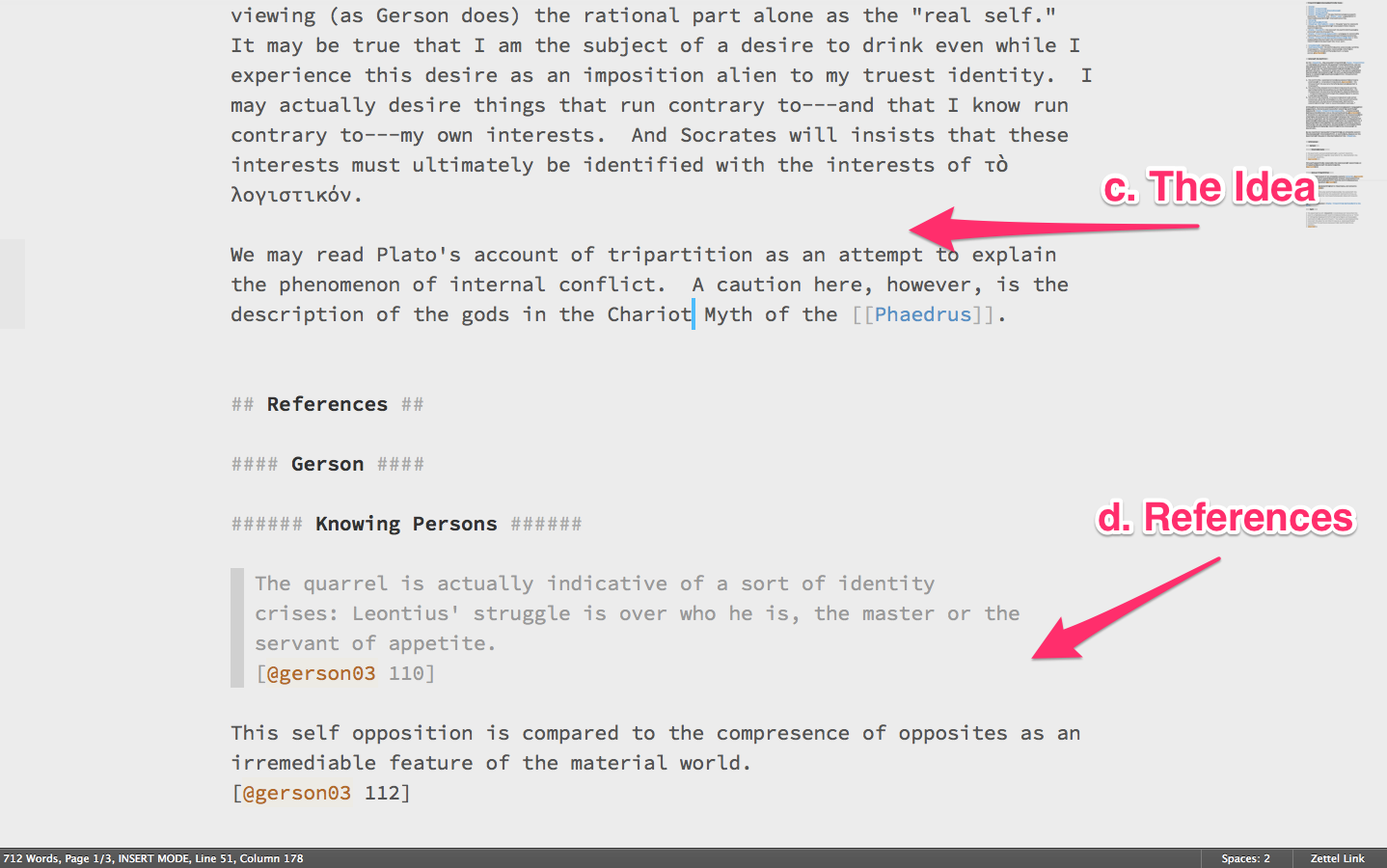Going From Reading To Notes
I’ve recently been asked how I process my notes from my notebook into the computer. I make a distinction between the low-friction handwritten notes that I create for the purpose of engaging with my reading or a lecture and those more organized and polished notes that help me actually remember material years down the road. See here for details.
While reading a book or article, I make a note every time I have a substantial thought or observation. I begin by writing the page number I am currently on, then the thought. As much as possible, I try to write in my own words, critically evaluating what I am reading rather than merely echoing. If, however, I think that I will need to quote an author explicitly, I copy down the quote making sure to place directly quoted material in quotation marks. I then double check the quote for accuracy. All of this should take a minimum of effort and organization while still maintaining clarity and depth of thought.
When I come to organize these notes, I slowly work through each page reference one at a time. First, I ask myself whether it is important that I remember this bit of information long-term. If not, I move on immediately. Second, I ask myself, “What is the single idea here?” trying to remember the principle of one thought per note. So I have two possibilities: (1) I need to create a file that captures this single idea or (2) I already have a file. Let’s take both these possibilities in turn:
- This option is more involved since I have to create a new idea note. (This is accomplished easily with my Sublime Text plugin.) Let’s break this down into steps with a couple screen-shots:


- I begin by populating the title of the note.
- I then create a bullet list off the top of my head out of every other note that has a conceptual connection to this new idea I am working on. If the connection is not completely obvious, I add a one-line description of the connection. I then follow all these links and add back-links in each of those files with the same procedure. While I am in those files, I keep an eye out for links to other files I did not remember in the first step. I keep adding to the list of connections and adding back-links until I have exhausted the connections to the best of my knowledge. This sounds time consuming, but it usually only ends up taking a minute or two and it greatly helps with keeping things tidy once the Zettelkasten expands to hundreds of notes.
- Now the hardest part: I think very carefully about the single idea that prompted the creation of this note file. I try to write out my own view as clearly as possible in about a paragraph. In all likelihood, I will copy and paste this paragraph into a rough draft of something I am writing, so I try to put in the effort up front to make the writing level as good as possible while the ideas are fresh in my mind. If this ends up going on to more than 300 words or so I likely have more than one idea and I need to split it up into multiple files.
- I then add a “References” section beneath my written paragraph with subsections for each source contributing to my understanding of the topic. Since this is a new note from reading I will just create one reference to the current author. In this section I put important quotes or page citations that I may need when I go to transform my humble paragraph into part of a real document.
- I find the file that accurately captures the single thought. I review its contents and think about whether this new bit of information alters my views on the matter. If so, I edit my description of the idea. Either way, I add a link at the top of the note in the Connections section to the relevant reading note file with a one-line description of what this reading in particular contributes to my understanding. If there is a quote involved or a more extended description of an authors position, I may also create a subsection at the end of the file in the section called “References.”